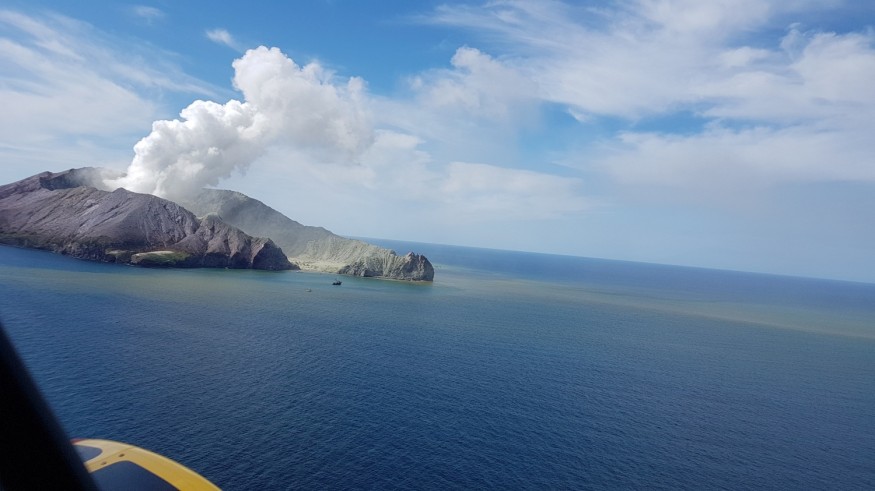
Scientists believe the eruption that claimed at least five lives on New Zealand's White Island came with a very minimal warning for locals and tourists at the location.
The sudden eruption of New Zealand's most active volcano raised issues over why tourists were permitted to visit the place despite officials being conscious of the increase in volcanic activity.
"The alert levels, which range from zero to five, were still 'low' and [authorities who regularly visit the island] have been monitoring it with various remotely operated [devices]," Professor Richard Arculus, Australian National University's volcanologist told 9News Australia.
GNS Science raised White Island from Alert Level 1 to Alert Level 2 after witnessing an uptick in sulfur dioxide gas, which arises from magma. Seismometers on the island picked up stronger tremors, which might indicate gas moving through the volcano. The current hazard alert system, according to New Zealand's geological hazard information, describes L2 as "moderate to heightened volcanic unrest," with chances of eruptions. Levels L3, L4, and L5 all represent explosions of varying severity.
The alert level, despite the increase in activity and potential for an eruption, failed to stop tourists flocking to see the volcano that attracts more than 10,000 people every year.
Meanwhile, Ray Cas, a professor emeritus at Monash University, claims the island "has been a [catastrophe] waiting to happen for many years."
"Having visited it twice, I have always [assumed] that it was too [risky] to allow the tour groups [every day] in the [deserted] island volcano by boat and helicopter," Cas remarked in the Australian Science Media Centre.
Cas added White Island has a '50/50' possibility of exploding again, as the crater's activity increased on Wednesday.
Lives lost as volcano erupts in New Zealand
White Island's eruption happened about 2:11 pm local time, 48km off the coast of the Bay of Plenty, on the north island, causing an ash plume to reach more than 3,600 meters above the mainland.
In a press conference, Ken Gledhill from the New Zealand geological agency GNS Science said the explosion was a "throat-clearing," noting that the volcano "showed increased activity for the last few weeks."
"We can't be [sure] there won't be another eruption in the next 24 hours," said Gledhill.
Meanwhile, New Zealand Prime Minister Jacinda Ardern did not respond to questions as to why people were permitted to visit the island if scientists warned about the increased seismic activity.
"I know there is a huge amount of concern and anxiety for those who have loved ones [touring around or just near] the island at that time. I can [guarantee] them [the] police are doing everything they can," the Prime Minister said.
"The [total] focus needs to be [on] the search and rescue," Ardern said.
Recovering the remaining bodies would be risky, expert says
Locals frantically wanted the bodies of those who died to be brought back to the mainland, says Whakatane Mayor Judy Turner.
However, experts say efforts to recover the bodies left on White Island after the volcano suddenly erupted would put more lives at risk.
Cas told Daily Mail Australia that going back to White Island poses a significant danger to those involved.
About 50 people, many of them are from the visiting cruise ship Ovation of the Seas, were on the island when the volcano emitted 'supersonic' fumes and ash rising about 4 kilometers into the sky. The explosion has left 30 people recovering in hospital, some from severe burns on up to 90 percent of their bodies.
"White Island is in a [perpetual] state of [uncertainty] and [allowing] tourists to walk right to the edge of a very active volcano time and time again is incredibly [risky]," Cas said.
Cas added the volcano has a "very active geothermal system" with several steaming gas vents and differing amounts of hot water-filled crater lakes in the floor of an amphitheater-shaped large crater.
© 2025 NatureWorldNews.com All rights reserved. Do not reproduce without permission.





